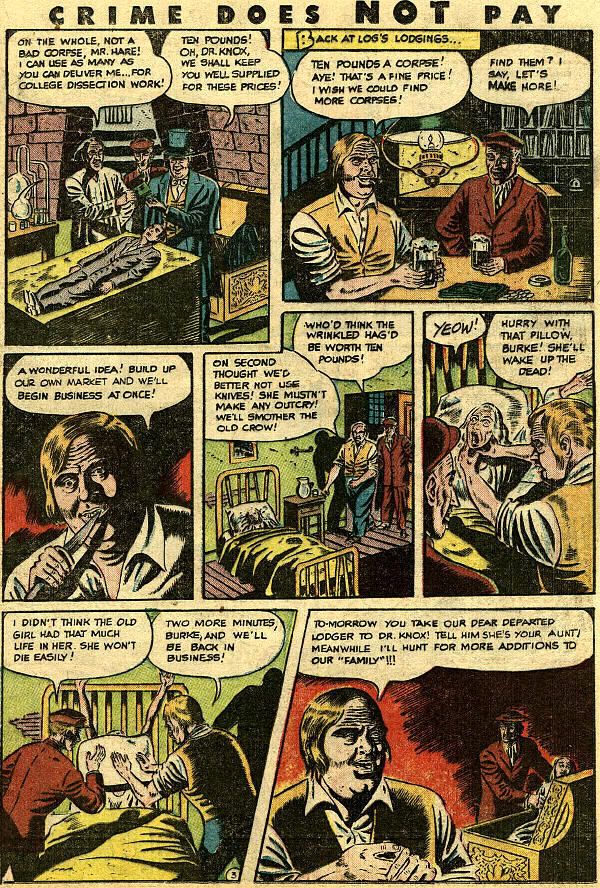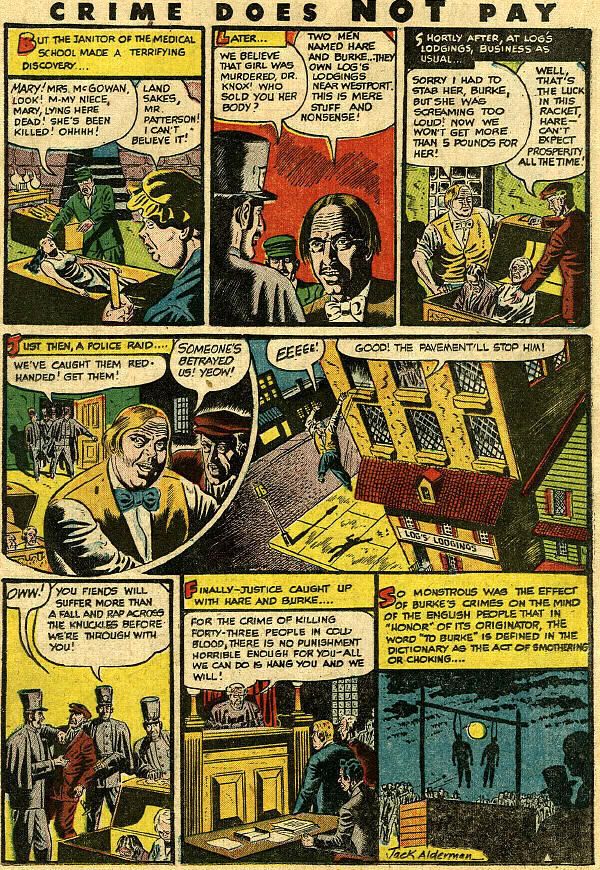
Number 282
Burke and Hare
"To burke" is to kill by smothering or suffocation. The verb comes from this pair of miscreants, Burke and Hare, immoralized…heh-heh, I mean immortalized, in "Ghoul's Gold" from 1946 in Crime Does Not Pay #43. It's written by Robert Bernstein, who later worked for EC, writing the entire run of the title Psychoanalysis. He was an all-purpose guy. A couple of years later he did Aquaman stories for DC.
Jack Alderman was the artist of "Ghoul's Gold." Jack had a very heavy-handed style. I don't think I've ever seen anything drawn by him in any but Lev Gleason's crime comics. His figures are stiff--get it? stiff?--and his inking is heavy and dark. In other words, just about perfect for this little tale of a couple of infamous murderers…
















































